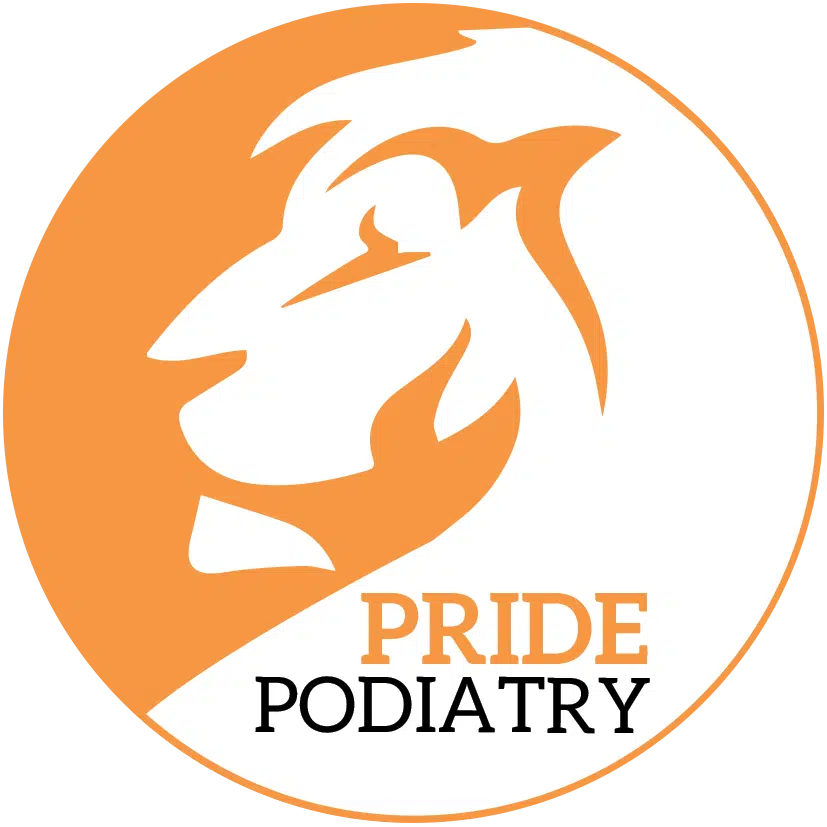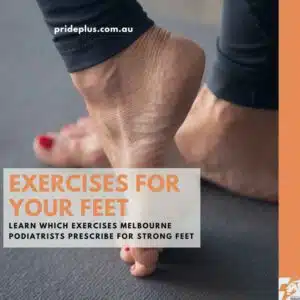Gather round, scooch your chair a little closer. This is a safe place for all of us. Welcome to ingrown toenails anonymous. Well, I’m going to put my hand up and no longer be anonymous, but you don’t need to. Let me tell you about my story of how I learned how to fix ingrown toenails (both my own and many others).
My name’s Tim, and I’ve had an ingrown toenail. It started when I was a teenager. Like many Aussie teenage boys I wasn’t exactly obsessed with cutting my toenails properly. If I’m being truly honest, I did less than the bare minimum. I let them get a little long and, yes, yes it’s all true. I ripped them and I picked at them. And I developed an ingrown toenail.
Now as a podiatrist I know why I had an ingrown toenail all those years ago. There were some factors that contributed that I actually could control. I could have cared for me feet better, I could have used a really good nail care technique.
But there were a few that I couldn’t really control. I had to wear school shoes that squished my feet more than was ideal. I had some genes passed down that contributed to my nails being more curved than normal.
As an aside, now I’m a podiatrist I know that’s called involution. For example, having an involuted toenail is where the nail plate wraps around into the nail sulcus.
So here, at ingrown toenails anonymous I’m going to share how a bit more about ingrown toenails and how we fix them, for good.
Need a quick fix for your ingrown toenail?
Book in with our podiatrists across our clinics in Melbourne now.
What is an Ingrown Toenail
An ingrown toenail happens when the hard toenail pierces into the skin on the side. You’ve basically given yourself a large splinter, except instead of something completely foreign like a shaving of wood, the splinter is made from the edge of your toenail.
Usually, the toenail edge starts pressing gently on the skin first, and feels like occasional discomfort. Over time, as the nail keeps growing out from the base, and the pressure builds it can push through the skin and cause an ingrowing toenail.
The ingrown toenail edge on it’s own can be very painful. The complications of having an open sore where the ingrowing toenail is can be even more painful and serious.
As there’s now a portal of entry, the bacteria which live on your skin can now get inside the open sore and cause either a local or spreading infection. Local infections can trigger an even greater pain response than a non-infected ingrown toenail. Spreading or systemic infections can be serious enough to put you in hospital or with other co morbidities present lead to amputation.
So while an ingrown toenail is common condition and very straight forward, it’s your nail, pressing into your toe, essentially like a splinter. The complications of this painful condition can be severe.
What Causes Ingrown Toenails
While these are all causative factors that contribute to an ingrown toenail, it’s very rare that one of these alone leads to an ingrown. Most of the time it’s a combination of these.
Poor Toe Nail Cutting Technique
As I’ve owned up to already. Improper nail cutting technique like mine as a teenager can cause or contribute to an ingrowing toenail. Toenails should be cut straight across, from one side to the other. As we age and our toenails become more involuted (curved) we must follow this edge straight across the toe still. In practice this means we cut across the toe and down towards the ground (if the foot is level on the ground).
The big no-no when cutting your own toenails is to avoid cutting your toenail back towards the foot and rounding like a fingernail. Rounding your nail corners can contribute to an increasing rate of involution in some cases.
Where this might need to happen is when your podiatrist is clearing and reshaping already curved nails at risk of ingrowing. As podiatrists are highly trained and using precision sterile instruments we’re able to clear, file and reshape the edge of a toenail to give it the best chance of growing out proud on top of the skin, and not into it.
Tight Shoes
Wearing footwear that is tight or narrow around the toes can cause an ingrowing toenail as the toenail edge is pushed closer and harder into your toe. This might happen from the moment you put a shoe on if it’s really tight and hard around the upper. Think fashionable pointed and patent leather pumps, heels or court shoes.
Or, it could be that your feet and toes swell during the day and the shoes you put on in the morning are now too tight for you later in the day.
For the real little ones, ingrown toenails in babies are less likely due to tight shoes, and more likely due to tight clothing such as onesies.
Heavy Bedsheets
Heavy bedsheets pulling down on your toenails also contributes to ingrown toenails. For many of us who’ve suffered with ingrown toenails some of the worst pain occurred at night when the doona or weighted blanket has squished our toes.
Picking or Tearing of Nails
Seeing as how cutting toenails correctly can reduce the likelihood of developing an ingrown toenail, if we tear or pick at our nails they are much more likely to become ingrown.
Not only does this lead to an increase in the curvature of your nails, but the edge is no longer smooth. A ragged or jagged edge pierces into our skin much easier than a smooth edge.
Mum & Dad as Ingrown Toenails are in the Genes
Did Mum have an ingrown toenail? Or Dad? Both??? Ok, just like our facial features, our feet features (feetures?) are passed down. This includes our nail shape, how curved our nails are, the width of our feet and toes. Our family history can also dictate how flexible we are. The more flexible the easier it is to reach our own toenails for safe self care.
Medical Conditions
Having different conditions such as diabetes, peripheral arterial disease or bowel disease can cause lots of complications with ingrown nails. Bowel disease or malabsorption of certain nutrients can affect nail plate health and shape. Diabetes is a common health condition which both increases the risk of an infected nail, nail plate health and delay or prevent healing from poor circulation.
For anyone who does have these risk factors seeing a foot specialist (podiatrist) regularly is already recommended.
How To Fix Ingrowing Toenails
Fixing an ingrown toenail is simple, but the process can be a little different person to person. The removal of the ingrowing edge and prevention of it growing back. Simple.
Oh, ok, maybe not that simple.
Removing the ingrowing edge can be something that a podiatrist completes in a normal podiatry consultation. Precise, careful and feels amazing once the edge is removed. Job done? Not quite.
Addressing the causative factors for you comes next. If the toenail edge is likely to regrow into the exact same shape and position then something else needs to be done to fix the ingrowing toenail for good.
For this we utilise a procedure called a partial nail avulsion (PNA).
A partial nail avulsion is a minor surgical procedure that your podiatrist performs under local anaesthetic. It’s a low risk, high success rate procedure where the curved edge of the nail is removed and then the nail root edge is treated to prevent it from growing back.
In the past a surgical treatment known as a wedge resection was performed for ingrowing toenails. The main differences between a wedge resection and a partial nail avulsion are:
- A wedge resection opens a larger area of skin on the toe and requires stitches. A partial nail avulsion is the “keyhole” variant where no stitches are required.
- The healing time following a partial nail avulsion is much shorter with minor dressings used for around 2 weeks vs 6 weeks for a wedge resection.
- Post operative pain is reportedly less with a partial nail avulsion where the incision is made through the nail plate (which has no nerve endings) rather than the toe itself.
Partial Nail Avulsion Procedure
Your podiatrist will guide you through the process of a partial nail avulsion and if this ingrown toenail surgery is right for you. The basics include numbing the toe with anaesthetic and then clipping down through the nail plate to the nail matrix. From there the nail edge and any nail spicules are removed from the nail sulcus. A quick cauterisation of the nail matrix to prevent regrowth and your ingrown toenail is fixed.
A dressing will be applied to minimise the risk of infection and aid healing. Most likely within an hour you will be walking out preferable in an open-toed shoe. There’s very rarely any severe pain and a review with your foot specialist podiatrist in around 1 – 2 weeks and then again in 2 – 3 months is usually recommended.
While you’re toe is healing it’s important to keep any bandages and your foot dry and follow the instructions from your podiatrist closely. Developing a toenail infection in the remaining normal nail would not be ideal due to poor foot care.
Treating The Secondary Ingrown Nail Infection
When we are working out the specifics of how to fix ingrown toenails we also have to address any secondary infection that could be present. If there is infection present, with the toe extra red, swollen and pus or hypergranulation tissue is present then treating and resolving the infection is required.
This might mean a trip to your doctor for oral antibiotics, or it could require some more local antimicrobial measures like bathing in salt water and dressing with topical antiseptics like betadine.
The most common mistake that people make when treating ingrown nails is to ONLY treat the signs of infection. As infection makes the ingrown nail even more sore and painful a course of antibiotics or salt water bathing can make a really big short term difference in reducing the pain.
The problem is, the toenail remains ingrown. The open sore is there. With more pressure and more nail growth it will continue to be sore. And the same risk of infection that happened initially will be present, so more than likely it will become infected again.
What You Can Do at Home For Your Ingrowing Toenail
While fixing an ingrown toenail for good with a nail surgery is something you can achieve when you come and see your podiatrist foot doctor, there’s a lot you can do for them at home too. Some of these treatment options include:
How To Fix Ingrowing Toenails – Home Checklist
1. Clean up your nails – remove dead skin cells and dirt under them
2. Cut your nails straight across
3. Avoid tight fitting footwear
4. Wear comfy shoes
5. Don’t cut your nails too short
6. Use a file to keep your nail edges smooth and not sharp
7. Keep your feet clean and dry to reduce infections
9. Get professional care, see a podiatrist
Treating Infection at Home
It’s possible to treat local infections of an ingrowing toenail at home. Salt water bathing where you clean away as much debris and pus from the edge of the toe is the first step. Simply pop some table salt into warm water and wipe away as much pus and debris as you bathe your toe. Try to wipe from the nail bed away towards the end of the toe. Next, apply a topical antiseptic dressing such as betadine which will locally kill off those pesky bacteria. An antibiotic ointment can sometimes be useful as well although you do need to be careful not to add too much moisture to the nail edge. Covering with a sterile, clean dressing at all times will then reduce the chance of bacteria coming back while you go about your day.
Avoiding re-infection by keeping your feet clean with a soap free wash and drying carefully between toes is also advised.
Fungal infections of your toenail can also change the shape and likelihood of an ingrown toenail developing. If you suspect a fungal nail infection you can use this at home testing tool and get started on a treatment.
And in saying all of this, I would still recommend getting personal advice about treating an infected ingrowing toenail from your podiatrist ASAP. The risks of spreading bacterial infection and the severity of the complications is just not worth mucking about with.
Cutting Toenails Correctly
Cut your toenails straight across from side to side. You can follow the curve of your nail down to the ground if you have to, but you must avoid cutting the nail back down towards your knuckle. Using a emery board or nail file to keep the nail fold clear will also help.
Avoiding Tight Shoes
Do some shoes cause more discomfort than others? They’re probably the part of the problem. Check the fit of your shoes and avoid the most narrow ones when you can.
A trick can be to look at the sole of the shoe on the bottom, then compare that with the shape of your foot. Is the sole much narrower? This means the upper of the shoe will be pulling your toenails back down onto, and ultimately into your toes.
Ensuring you are wearing comfortable shoes most of the time will help.
Avoiding Heavy Bedsheets
While I love the relaxation and deep sleep I get with a weighted blanket having something heavy on your toes for long periods is not a good idea. Especially if you already have at risk, highly curved toenails.
Ready To Fix Your Ingrown Toenails For Good?
You can book in online with our caring podiatry team at any of our clinics. You’ll be welcomed into our ingrown toenails anonymous club and guided through what your fix will look and feel like for you.

We’ve also produced this handy guide when you’re preparing for your ingrown toenail procedure.




